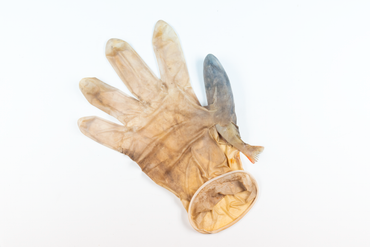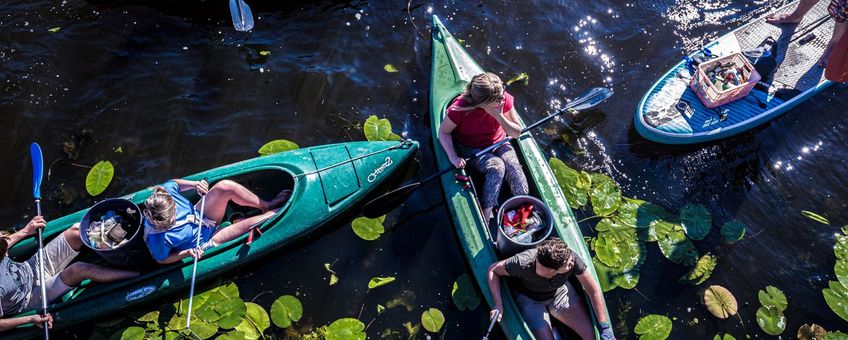
De Grachtwacht wins award
Naturalis Biodiversity CenterCommitment makes impact
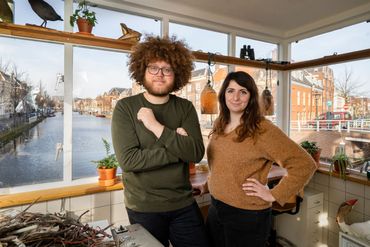
The idea for De Grachtwacht came about in 2018 after Leidens Ontzet. Auke-Florian Hiemstra and Liselotte Rambonnet, both students at the time, were shocked by the amount of trash and especially plastic cups in the water of the city center. "After a holiday, we sometimes found as many as 7,000 cups in 100 meters of canal! That had to change." The founders tackled the problem thoroughly. They focused not only on cleaning up, but also on addressing the source. They photographed 1,000 plastic cups, piece by piece, and every day that the municipality did not switch to a sustainable alternative, the duo posted one photograph on Instagram. In doing so, they tagged the alderman, the municipality and beer brewers. They also exhibited the photos, collected signatures and engaged in conversations with politicians. Thanks to these efforts, Leidens Ontzet 2019 was the first citywide event in the Netherlands to switch to one type of deposit cup. Hiemstra: "This time, 98.2% of the cups were returned. The canal was cleaner than after an average market day."
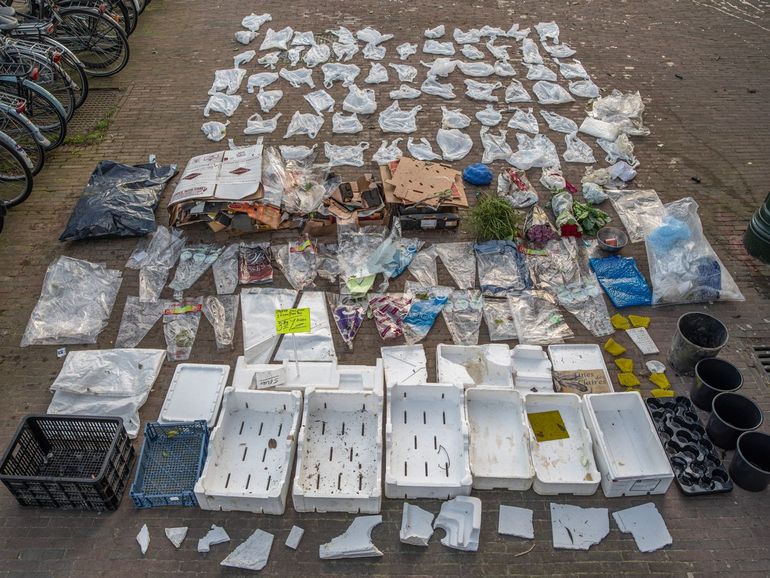
Litter and data
By now, the Grachtwacht operates every Sunday, come rain or shine. A fleet of clean-up canoes, accompanied by a research boat, sails through the canals. The volunteers are all armed with litter grabbers, which is how they retrieve about 15 bags of litter from the water each week. "We are not just collecting litter," Rambonnet explains, "but also data." Because the litter has only been in the canal for a short time, it is often easy to trace where it comes from. "For example, there is typical market waste such as flower foil, styrofoam trays from the fishmonger and plastic bags with the name of a stall. If you know where it comes from, you can address the problem more precisely."
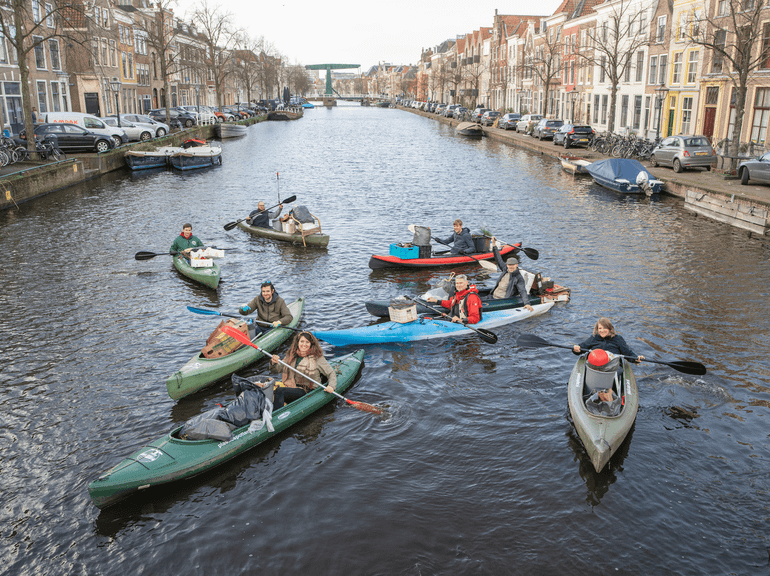
A museum in the bridge keeper's house
The most extraordinary finds end up in the windows of their canal museum, a bridge keeper's house on the Marebrug in Leiden. Here, people learn about plastic pollution and why it is important to prevent it: because of canal nature. Hiemstra and Rambonnet, both PhD students at Leiden University and working at Naturalis, research the impact of plastic pollution in nature in their daily lives. Although The Grachtwacht was not originally part of their research, the project does help the plastic researchers stay optimistic. Rambonnet: "By rolling up our sleeves, we are not only dealing with the problem, but also with the solution."
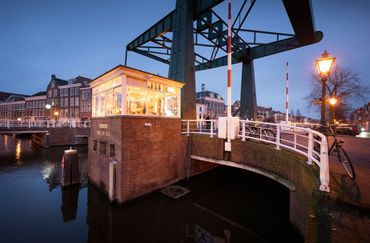
The clean-ups also proved to be an important source of inspiration for new scientific research. Hiemstra: "When we think of plastic soup, everyone immediately thinks of the oceans and turtles with straws in their noses, but most of the waste ends up there through freshwater such as canals and rivers. We still know very little about the impact of this plastic closer to home, in the canals." That's why the duo is compiling a database. They preserve species by stuffing them, freezing them or conserving them in alchohol or formaldehyde. They also collect DNA samples to map the canal's ecosystem. They do this to learn more about the canal, but there is another reason. Hiemstra: "By seeing the canal as a valuable ecosystem, you can convince people to stop treating the water as a drain." Rambonnet adds: "The canal is a natural area that runs through the city. When we think of urban nature we often think of the green, and as a result blue nature is forgotten. That's a shame, because blue nature is incredibly important to the city."
International exposure
One specific find led to a major scientific publication in a biological journal and was picked up by international media outlets such as CNN, The Guardian and National Geographic: a perch entangled in a disposable handshoe. This victim led to the first scientific study on the impact of corona litter on animals. The photo of the perch was later nominated for a prestigious photo award, the Wildlife Photographer of the Year award from the Natural History Museum in London. Thus, as a local initiative, The Grachtwacht is having global impact. Read more about this at Naturalis.
Looking towards the future
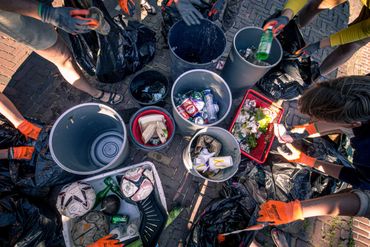 The Communication Initiative Award is a prize for researchers who use effective communication to bring their research close to a wider audience. A sum of fifty thousand euros is attached to the award. "That money is more than welcome," says Hiemstra. "At the moment, the Grachtwacht runs solely on donations. This award ensures that we can continue our mission!" The two founders are especially proud that already more than a thousand volunteers have stepped into a canoe with a trash grabber. Hiemstra: "It gives us hope that there are always fellow city residents ready to help out." Rambonnet agrees. "We would never have gotten this far without all of our motivated volunteers. Winning this award will ensure that we can continue to clean up, investigate, tackle the source and tell stories in the years to come."
The Communication Initiative Award is a prize for researchers who use effective communication to bring their research close to a wider audience. A sum of fifty thousand euros is attached to the award. "That money is more than welcome," says Hiemstra. "At the moment, the Grachtwacht runs solely on donations. This award ensures that we can continue our mission!" The two founders are especially proud that already more than a thousand volunteers have stepped into a canoe with a trash grabber. Hiemstra: "It gives us hope that there are always fellow city residents ready to help out." Rambonnet agrees. "We would never have gotten this far without all of our motivated volunteers. Winning this award will ensure that we can continue to clean up, investigate, tackle the source and tell stories in the years to come."
Tekst: Sietske Hoekstra, Naturalis Biodiversity Center
Foto's: Jacob Kaptein (leadfoto: Grachtwacht in actie); Alexander Schippers; Auke-Florian Hiemstra; Taco van der Eb

